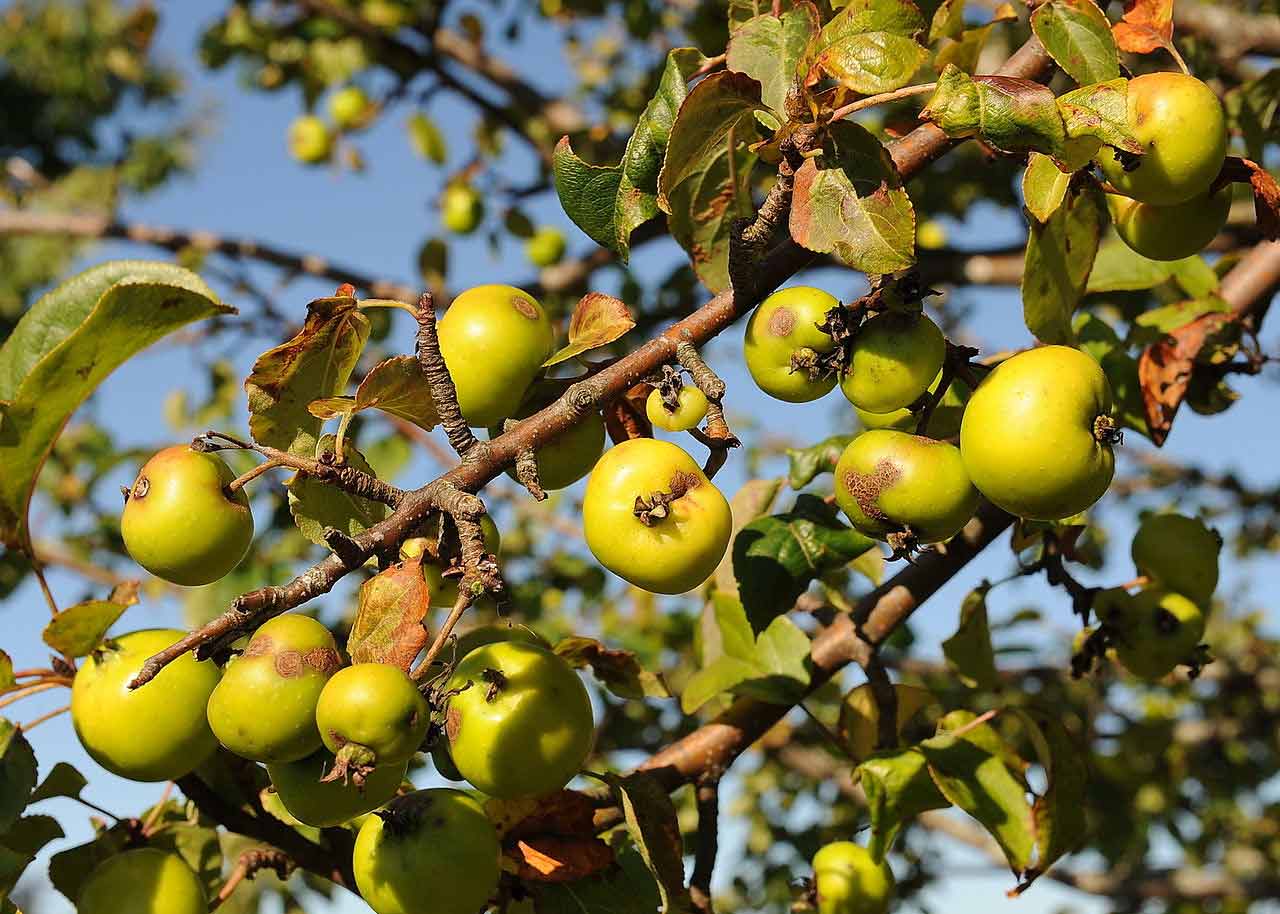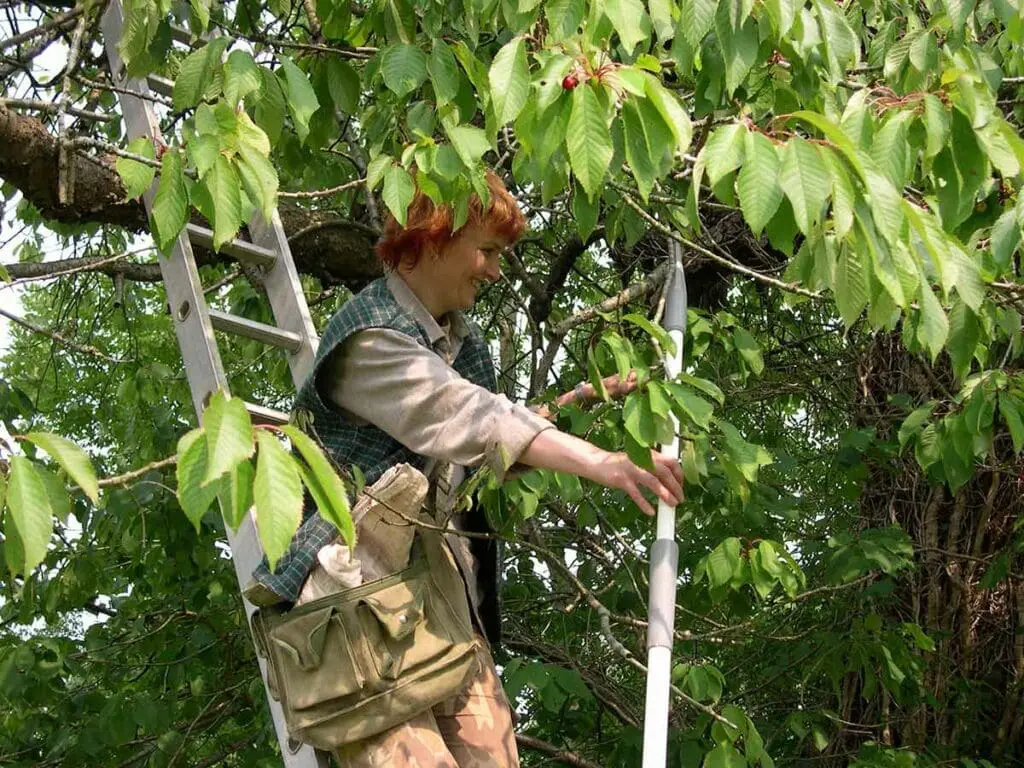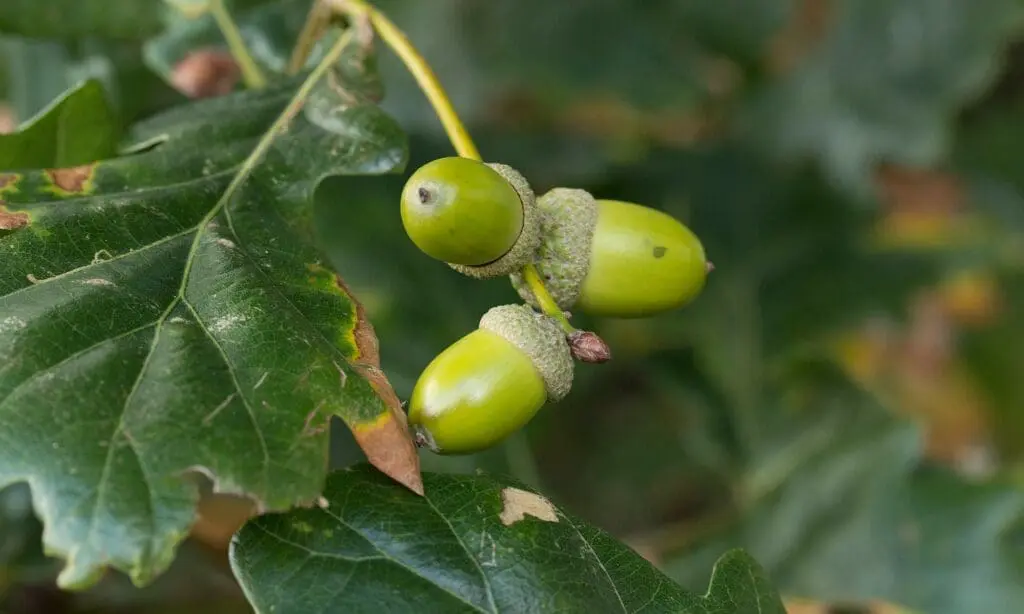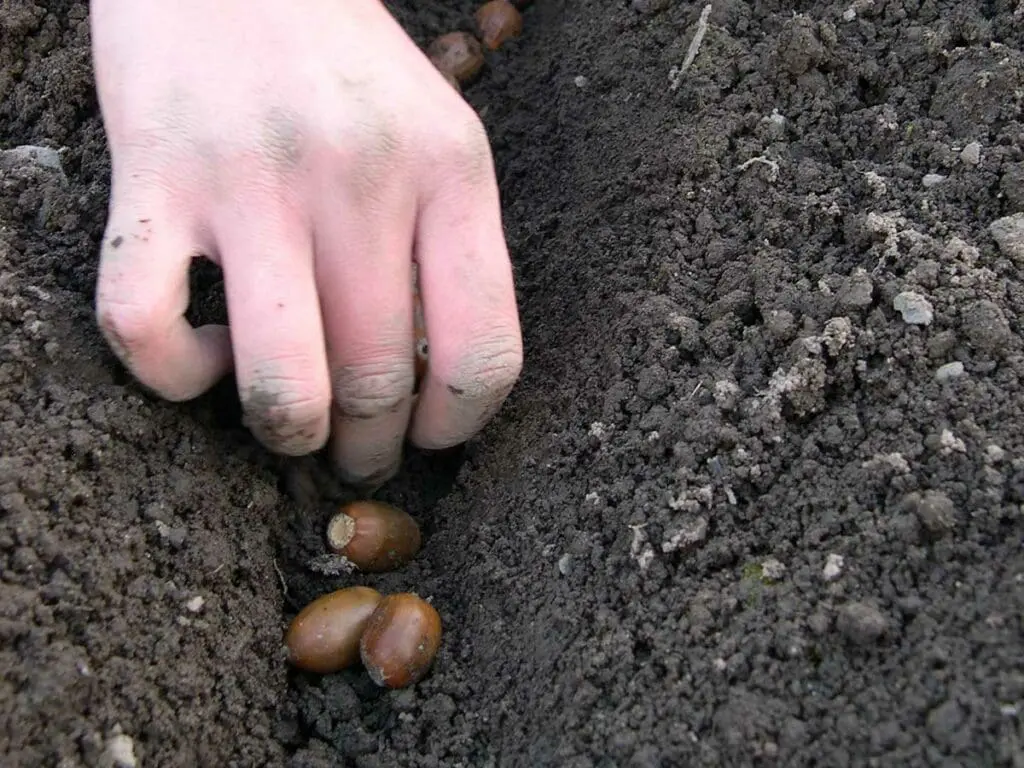- Common name: Crab Apple
- Scientific name: Malus sylvestris
- Family: Rose (Rosaceae)
- How to grow Crab Apple
Crab apple trees are quite uncommon in the wild. It is always difficult to distinguish them from the domesticated apple, due to cross-breeding.
The development of the domesticated apple began at the end of the Stone Age. This has lead to a great many varieties available to us today.
Bats use old crab apple trees as daytime accommodation. It also provides food for many insects and small animals.

Leaves
Leaves are alternate with a crooked and pointed tip. They vary in shape from round to oval.
The underside of the leaves is smooth but can also be hairy, but not so much as the cultivated trees.
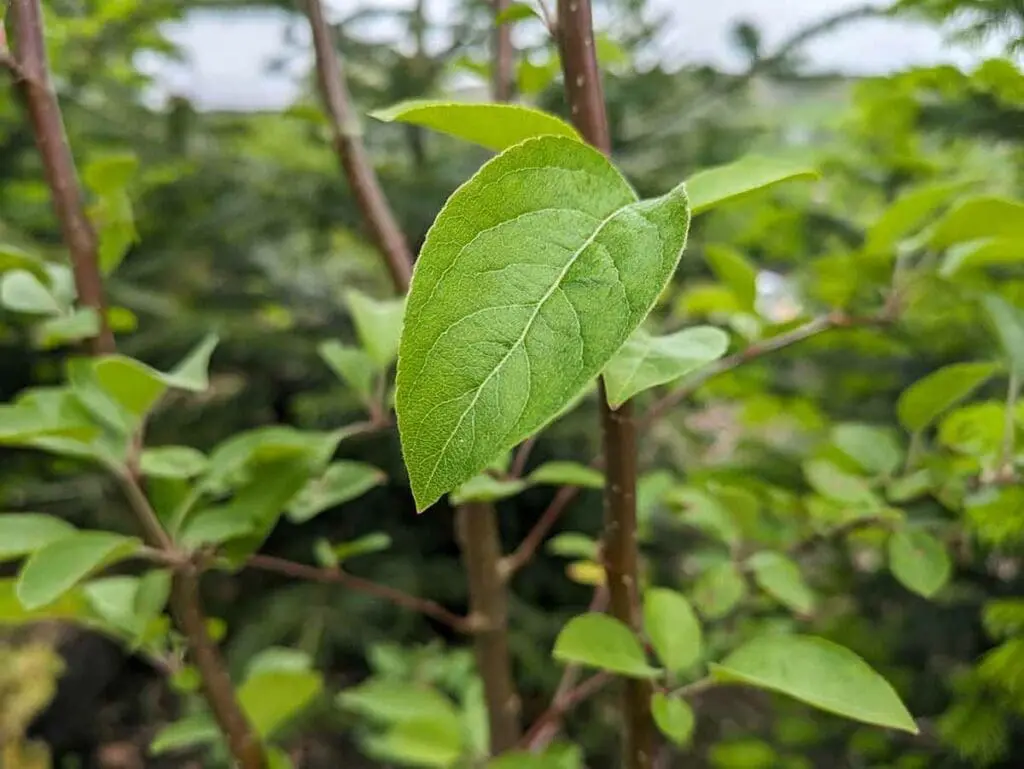
Flowers
The flowers are white and might be tinged with pink. They appear in April and May, having 5 petals.
Crab apple flowers cannot be self-pollinated (by flowers from the same tree). It is necessary to have another crab apple tree that can provide the pollen. This is carried from tree to tree by bees and other insects.
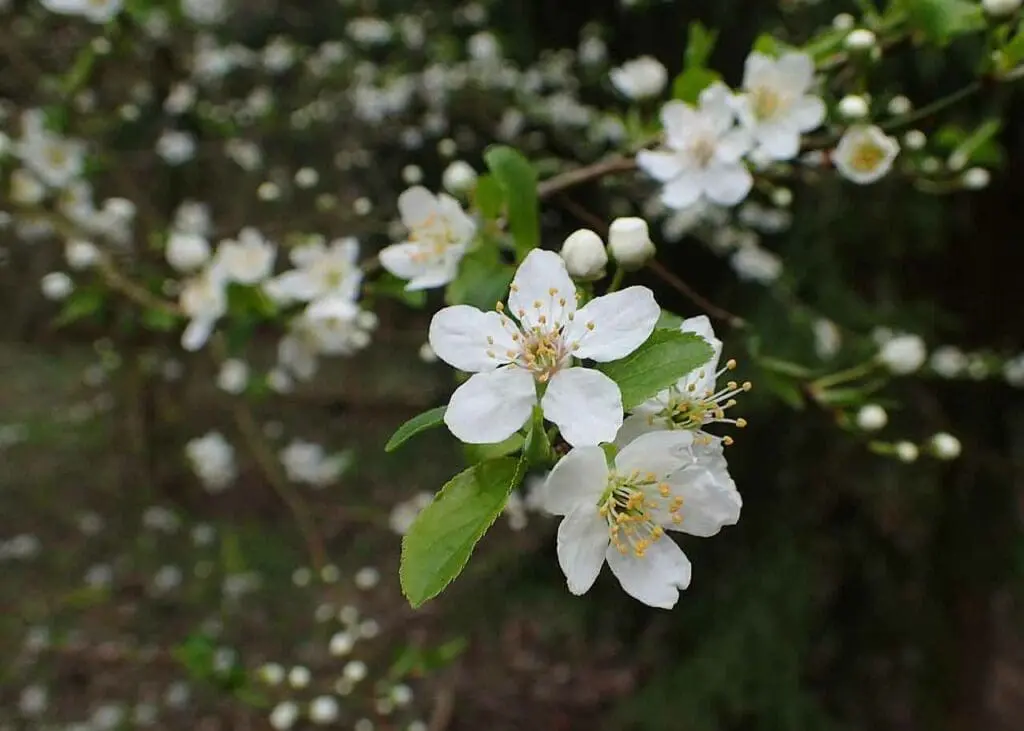
Fruits
Crab apple fruits are very small and normally green, ripening to yellow.
They are less than 3.5cm in diameter and have a long stalk. It is by the fruit that you can best identify a crab apple – in fact, they are almost like cherries in shape and size. They are very sour to the taste.
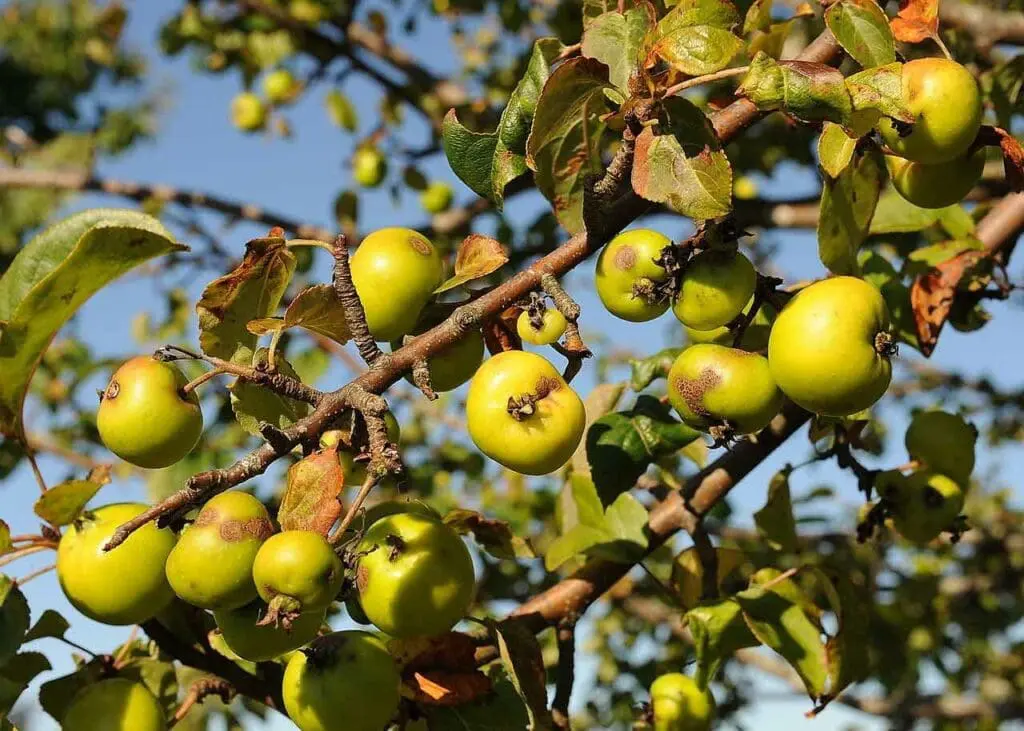
Bark
The bark is greyish and rough. As the tree grows and the trunk expands, fissures or cracks appear in the bark. Despite this, the timber is very water-resistant. In fact, part of the foundations of Venice is built from this timber.

Habitat
Crab apple seems to be a relict of our old oak woodlands. It is a specialist tree that needs a soil rich in nutrients and that contains lime (alkaline).
The tree needs to grow in a bright, but sheltered place. It prefers damp areas on the edge of woodlands. Nowadays it more commonly grows in hedges, woodland edges and on riverbanks.


